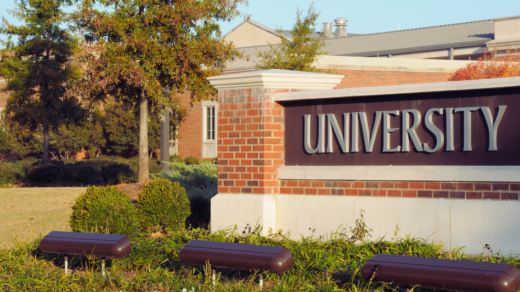The cost of university is one of the most hotly debated topics in America. The cost of tuition and other expenses is rising faster than the cost of everything else; it has become clear that the current system is not sustainable. One way to start making a difference would be to focus on making public universities more accessible for students.
Students in the USA are forced to pay for a college education, but the expense often exceeds the degree’s value. This is a reality that has been well-known for a long time, but the issue is finally being discussed more openly. The cost of university is one of the biggest expenses you’ll incur during your degree. It’s essential to get the best deal you can for your per year, but it’s not easy to compare costs.
Universities are expensive, but many students don’t realize the full costs involved in going to college. These costs include the tuition and fees that you pay each semester. Many colleges and universities also charge for utilities and student services such as campus parking, dining, and coffee shops. You also pay for textbooks, gym memberships, and student-run activities such as student newspapers, clubs, student government, and Greek organizations.
Besides that, if you move away from home for college, then you will also have to look at accommodation options which will also incur some costs. While most Universities offer in-campus housing, this may not be a preferred option for many students. It is important, however, to note here that cities like NY have private housing options that can come at a lesser cost. New York City offers a variety of student housing options to suit every need and budget. From shared apartments to private rooms, trendy neighborhoods to more affordable areas, and community spaces to resident events, you can find everything you need as a student, to make the most of your time and money in the city. This could be the case for many other cities across the country as well, which is why students may prefer to move for higher education.
However, one thing that has not received the attention it deserves is the real cost of university in the USA. The cost of attending university has skyrocketed over the last decade, and it’s not necessarily decreasing. If anything, tuition prices are increasing. Now, many universities are beginning to implement fees that students must pay in order to attend. This tuition increase is having a negative effect on students and their families and has created a vicious cycle of debt for the students. People have been known to make great sacrifices to send their kids to university. Many end up selling their homes through services known as ‘we buy houses Conroe‘ or other similar ones, in order to pay the fees. This and other instances have shown again and again that a college education is becoming a privileged and expensive commodity.
The cost of higher education in the United States is steep. Tuition alone is the largest expense for attendance, with the average price of a college degree topping $200,000. Even after your four-year degree is obtained, you will probably need to take out more loans to pay off your student debt than you will ever pay off in interest.
We’ve all heard that a university degree is a ticket to earning a good income later in life, but when you dig a little deeper into the actual costs, things get less rosy.
The real cost of university is getting all the way to the bottom of the cost of living in the United States. When taking into account the actual cost of university, you will find that the average yearly price of a university education in the United States is $25,000. When compared to the price of a university education in other countries, the United States is a little less expensive. University education in Australia is about $16,000, and in the United Kingdom, it is just over $12,000.
The Real Cost of Education Project calculated that it is a staggering $50,000 per year for a university graduate and over $1 million a year for a Harvard-educated CEO. These are numbers that even the most avid university graduate will struggle to understand. They are so high because universities are funded by the money the average American never sees, from taxpayers and invisible tuition fees.
As tuition rises, more students are forced to make difficult financial decisions that prevent them from graduating. In the United States, the average student loan debt stands at $26,000, and only a third of students who graduate have debt under $20,000.
Almost every recent college graduate will agree: there’s no fair way to pay for college. Students take on more debt than they can handle just to get the education they need, then they are expected to pay for it on top of living expenses.
However, living expenses can be adjusted by bringing change in the lifestyle and making a few knowledgeable improvements in daily need items. For instance, students can cook food at home instead of eating out daily or use natural ventilation rather than air conditioning when the heat is bearable. Students can also replace their electric furnaces with an eco-friendly and cost-effective option such as a heating oil furnace. Fuel like propane and heating oil can be purchased in bulk from a company similar to https://www.romeosfuel.com/ to run the heating system in winter and may also be able to power a fireplace.
On top of everything, we also have to consider that the cost of school is rising faster than most people’s salaries, so students might anyway have to take an education loan. Students can save money by living a simpler lifestyle and opting for resources that can reduce monthly bills and other expenses. For instance, instead of depending on electricity which can cost a lot, students and college pass-outs can consider sustainable energy options like solar power. In that case, consulting a professional company such as Avalon RV can be beneficial since they could provide detailed information on total energy expenses. However, students may also need additional assistance to pay off all their debts. In that case, internships, part-time jobs, and other earning methods can be useful.
See, the price of a university. In the US, it’s a big deal. The average student will spend the better part of a decade paying off the hefty amount they’ve loaned to their school. If they don’t, they’ll still live with repaying the student loans until the day they die. Well, that’s the case with the majority of students. Those who don’t get a job right after graduating will live a life of debt, like a collection of debtors.




